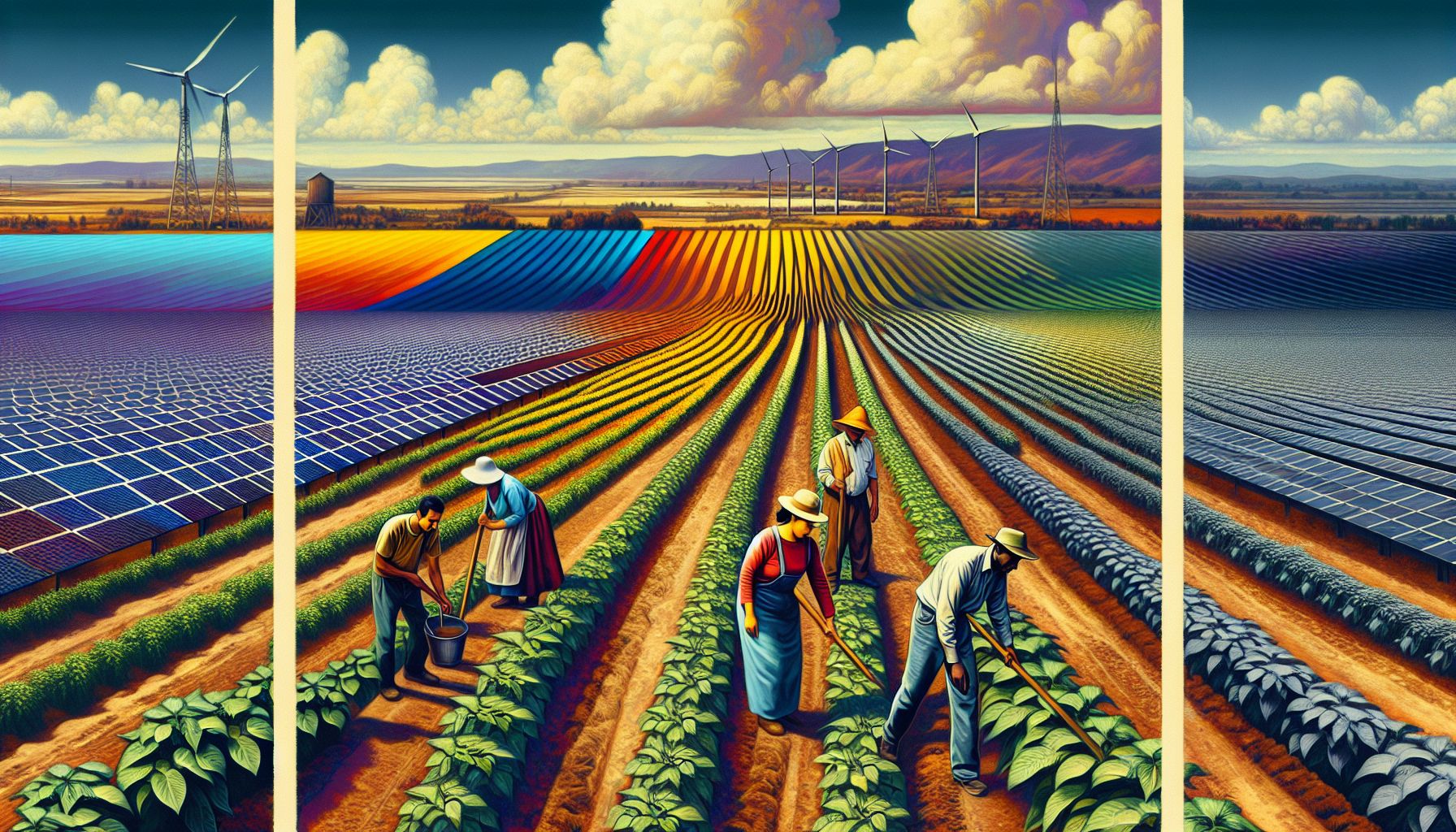Solar Farms Meet Agriculture: The Rise of Agrivoltaics

Boston, Thursday, 1 August 2024.
Bluewave is pioneering agrivoltaics, integrating solar technology with traditional farming. This innovative approach, championed by Jesse Robertson-DuBois, combines energy production with agriculture, potentially resolving land-use conflicts and enhancing sustainability in both sectors.
The Concept of Agrivoltaics
Agrivoltaics, the integration of solar panels with agricultural activities, is transforming the landscape of sustainable farming. This innovative approach allows for the simultaneous use of land for both energy production and agriculture, effectively mitigating land-use conflicts that have historically plagued the renewable energy sector. By placing solar panels above agricultural land, farmers can continue their traditional practices while generating clean energy, thus promoting environmental and economic sustainability.
Bluewave’s Role in Advancing Agrivoltaics
Bluewave, a company based in Massachusetts, is at the forefront of this green innovation. Under the leadership of Jesse Robertson-DuBois, Director of Sustainable Solar Development, Bluewave has established agrivoltaics as a standard practice in their solar projects. Robertson-DuBois, who also owns a farm in western Massachusetts, brings a unique perspective to the table, combining his expertise in both agriculture and solar technology to drive the company’s mission forward. Bluewave has raised $91 million to fund five agrivoltaic projects in Massachusetts, one of which is already fully operational and supports cattle grazing alongside solar energy production with minimal impact on the animals.
Building Trust with the Farming Community
A critical aspect of Bluewave’s success lies in their ability to build trust with the farming community. Robertson-DuBois emphasizes the importance of understanding the needs and challenges of farmers, engaging in open discussions about necessary modifications to farm equipment and practices. In one Massachusetts project, Bluewave opted to replace a tractor and hay machine rather than modifying the solar array, demonstrating their commitment to accommodating the needs of the farmers. This approach has helped Bluewave gain the support of the local agricultural community and ensure the smooth implementation of agrivoltaic projects.
Government Support and Expansion Efforts
Government programs and incentives play a significant role in the expansion of agrivoltaics. Massachusetts’ Solar Massachusetts Renewable Target (SMART) program, initiated in 2018, supports agrivoltaic projects by providing up to six cents per kilowatt-hour. This financial backing has been crucial in making agrivoltaics a viable option for many farmers. Additionally, other states like New York and New Jersey are exploring similar initiatives to integrate agrivoltaics with livestock and crop cultivation, further promoting sustainable farming practices across the United States.
The Future of Agrivoltaics
The potential of agrivoltaics extends beyond current projects. Robertson-DuBois highlights the promise of various crops under agrivoltaic systems, such as soy, which thrives with moderate sunlight. He also points out the viability of grains like wheat, barley, and oats, and mentions sweet corn as particularly suitable for agrivoltaics compared to grain corn. As Bluewave continues to develop and refine their agrivoltaic systems, the company is setting a precedent for responsible resource management in the renewable energy sector. By demonstrating the practical benefits and sustainability of agrivoltaics, Bluewave is paving the way for a greener future in agriculture and energy production.

